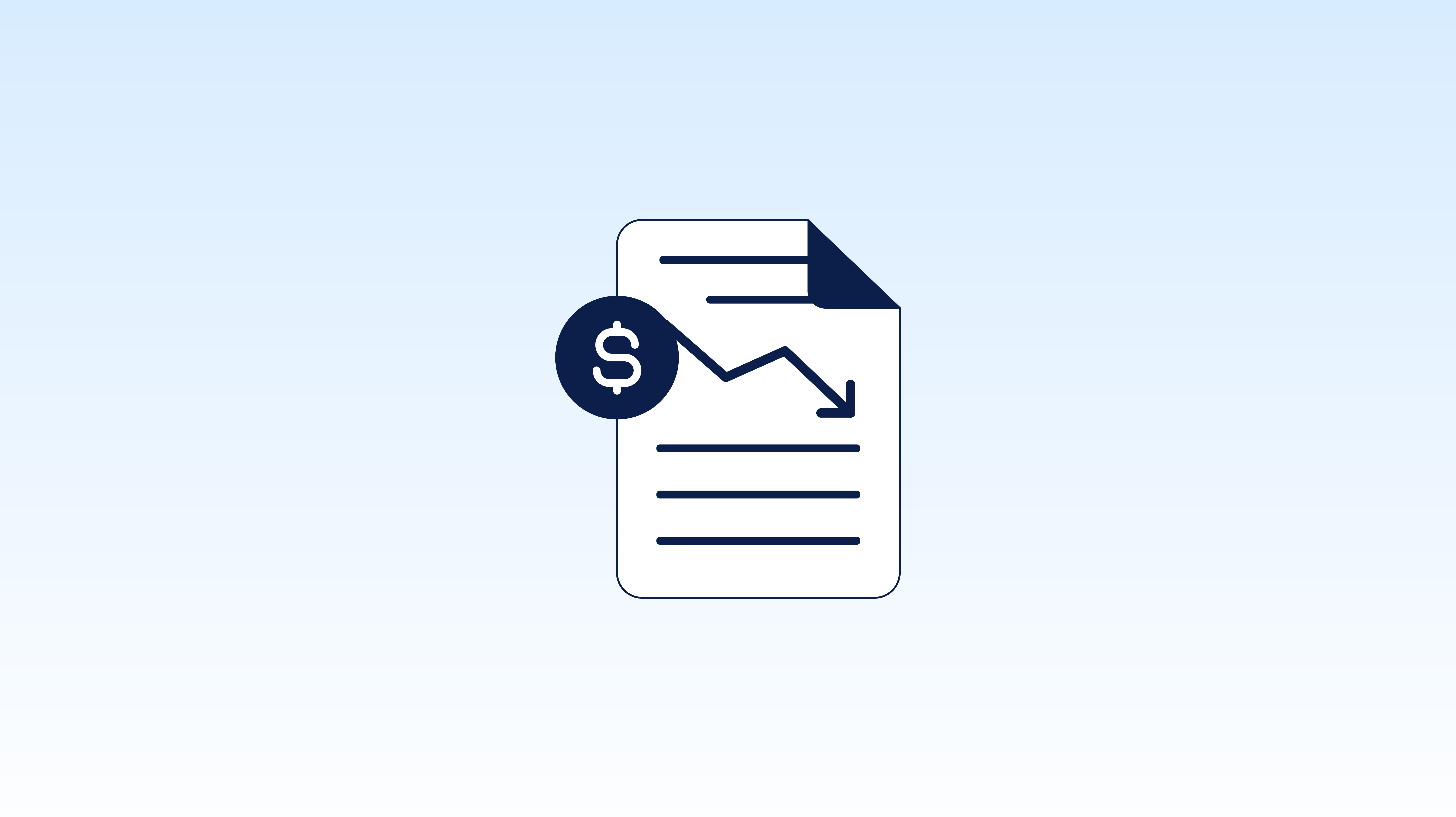Automated Accounts Receivable Programs: Cutting DSO by 30% in Six Months
In today’s economy, speed to cash is as important as speed to market. Companies that let receivables linger for 60, 75, or even 90 days are putting...
6 min read
September 13 2024
by
![]() Chris Cosgrove
Chris Cosgrove

WIth high inflation and rising operational costs affecting everything from supply chain to employee benefits, businesses of all sizes are feeling strain on their profits and growth. As a result, financial leaders are increasingly tasked with finding ways to lower their costs, and accounts payable is an area to target.
The ability to lower costs begins with taking a detailed look at traditional accounts payable (AP) processes, which are fraught with challenges that exacerbate operational costs, from manual data entry to increased errors and late payments to vendors.
Enter accounts payable automation–a transformative solution designed to address these very challenges. AP automation leverages technology to streamline the entire invoice processing workflow from data capture all the way to payment execution. This overall shift from manual to automated AP processing not only alleviates operational burdens but also empowers businesses to optimize their financial management and vendor relationships.
In this blog post, we will explore the top six ways in which AP automation helps reduce your operating expenses and provide compelling reasons for your business to make this software solution a strategic investment. By understanding these benefits, your organization can take proactive steps toward achieving greater efficiency and cost-effectiveness in its accounts payable operations.
With manual AP processes, it’s likely your staff members spend countless hours adding invoice data into accounting systems–a task that’s not only monotonous but fraught with risk for errors. With AP automation, however, invoices are scanned and data is extracted using Optical Character Recognition (OCR) technology. The information gathered is then pushed automatically to accounting software and uploaded, drastically reducing the need for human intervention.
Once you ulitize AP automation to eliminate manual data entry and reduce data entry errors, labor costs often go down. In turn, employees can redirect their time and expertise to more strategic and value-added tasks such as financial analysis and vendor relationship management. This resource reallocation helps make your AP department more efficient while also enhancing overall productivity.
Example: A tech company was struggling with lengthy invoice processing due to manual AP processes. Their finance team spent hours entering invoice data, leading to frequent errors and delayed payments. But once the company implemented AP automation, it was able to scan invoices and extract data automatically, directly integrating it into their accounting software.
Over time, the tech company was able to save on labor costs and reallocate its finance team's efforts to strategic activities like financial analysis and vendor management. The company can now focus on growth initiatives and strengthening vendor relationships to drive better business outcomes.
With AP automation, the time required for your staff to proccess invoice approvals is drastically reduced because invoices can be routed directly to designated approvers with the necessary documentation for quick decision-making. Additionally, automated notifications and reminders keep the process on track and eliminate the types of delays that often occur with manual systems. This quicker turnaround will help minimize bottlenecks in your department processes and ensure that operations continue smoothly and efficiently.
Example: A mid-sized manufacturing firm previously faced significant delays in invoice approvals due to manual processes. Their finance team struggled with bottlenecks, causing slow payments and frustration among vendors. By adopting AP automation, however, the firm was able to transform its invoice processing. Now, invoices are automatically routed to designated approvers with all required documentation, and automated notifications and reminders ensure that nothing slips through the cracks.
Timely and accurate payments are fundamental to fostering strong vendor relationships, and when your business consistently pays its vendors on time, this signals reliability and respect. Vendors appreciate clients who adhere to agreed-upon payment terms, as this leads to smoother transactions, fewer disruptions, and the ability for vendors to maintain cash flow.
One significant benefit of maintaining good vendor relations through timely payments is the opportunity for you to negotiate better terms. When vendors trust your business, they may be more willing to offer favorable terms such as discounts, extended payment periods, or reduced prices. These advantages then result in substantial cost savings and improved operational flexibility, giving your business more financial breathing room to manage its expenses.
In addition, prompt payments help your business avoid costly late fees, which can quickly add up, strain your financial resources, and harm your business’s reputation with its vendors. By ensuring that payments are processed accurately and on time, your business can avoid these unnecessary expenses while maintaining a positive rapport with vendors.
Example: A growing food distribution company had manual AP processes that led to frequent delays in payments and strained relationships with key suppliers. By implementing AP automation, the company is now able to ensure that invoices are processed quickly, and payments are made on time. This consistency builds trust and signals reliability to their vendors.
As a result, vendors are more willing to offer the food distribution company improved terms, such as discounts on bulk orders and extended payment periods. These combined benefits reduce costs, enhance operational flexibility, and help the company avoid late fees.
Historically, managing invoices, purchase orders, and payment receipts involved significant manual effort that included things like paper records, filing systems, and dedicated storage spaces. However, once your business shifs to an automated, digital approach, you’re able to streamline these tasks and eliminate much of the paperwork, therefore improving overall efficiency.
Consider the reduction in supply costs: Maintaining a paper-based system involves continuous spending on office supplies such as paper, ink, toner, and printers. These costs add up quickly, especially for businesses with high volumes of transactions. But by automating accounts payable processes and moving to a paperless system, your business can cut down significantly on these recurring expenses, which saves money and helps reduce paper consumption and waste.
Another advantage you’ll see with automation is the substantial savings in physical storage. Managing paper documentation requires considerable space, from filing cabinets to entire rooms dedicated to archiving. AP automation eliminates this need by digitally storing documents in a cloud-based environment or on secure servers. As a result, valuable office space is saved and document retrieval becomes faster and more efficient, improving workflow and freeing up resources for other important activities.
Example: A manufacturing company previously relied on a paper-based AP system to manage its invoices and payments but adopted AP automation last year. The office was cluttered with stacks of paper and filing cabinets, and employees spent significant time managing physical documents. By transitioning to a paperless AP automation system, the company streamlined their processes.
The shift to a digital system reduced their costs for paper, ink, and physical storage. Invoices and records are now stored securely in the cloud, eliminating the need for costly filing cabinets and freeing up valuable office space. This move also improves document retrieval efficiency, allowing employees to quickly access and process invoices, which enhances workflow and productivity.
AP automation enhances financial oversight by giving your team members greater control and visibility over their accounts payable processes. With real-time access to financial data, decision-makers can track payments, monitor cash flow, and ensure that financial obligations are met promptly. This immediate access to data helps prevent costly mistakes and allows for more accurate financial planning.
In the context of visibility, think about fraud prevention. Automated systems are equipped with features that detect anomalies in transactions, such as duplicate invoices or suspicious vendor activity. Because AP automation can flag these irregularities early, your business can reduce the risk of fraudulent activities slipping through unnoticed. Automation also eliminates the potential for human error, reducing the chance of internal fraud.
Improved budget management is another advantage AP automation offers. With higher visibility into the timing and amount of payments due to real-time monitorying, your business can manage its budgets more efficiently. As a result, you’ll find that it’s much easier to identify trends, forecast future expenditures, and avoid budget overruns. In the end, this enhanced oversight ensures that your business’s financial resources are allocated appropriately and spending aligns with your overall organizational goals.
Example: A manufacturing company struggled with manual AP processes. Their finance team faced frequent issues with missed payments, duplicated invoices, and even occasional fraud. After implementing an AP automation solution, however, the company experienced a significant transformation.
With real-time access to financial data, the company now tracks payments, cash flow, and financial obligations more accurately. The automated system promptly highlights anomalies, such as duplicate invoices or unusual vendor activities, therefore reducing the risk of fraud. This newfound visibility prevents costly errors and enhances budget management. As a result, the company is able to proactively address financial issues and make informed decisions, ultimately improving their overall financial oversight and stability.
Because of its ability to streamline routine tasks and reallocate human resources to more strategic roles, AP automation can fundamentally transform how your business manages its workforce.
With AP automation, routine tasks are handled by intelligent software that can quickly process large volumes of invoices and transactions, ensuring accuracy and compliance. As a result, your AP team can reassign its efforts to activities that require critical thinking and decision-making, such as vendor relationship management and financial analysis.
The automation tools available through this technology also offer real-time insights and analytics, enabling your finance team to monitor key performance indicators and make informed decisions. In exchange, these insights help identify trends, optimize cash flow, and uncover opportunities for cost savings. Then, employees previously dedicated to managing manual processes can engage in strategic initiatives that drive business growth.
Furthermore, by improving process efficiency and reducing bottlenecks, AP automation enhances overall team productivity. It enables staff to handle a larger volume of transactions without a proportional increase in headcount, thus optimizing workforce allocation. The result is a leaner, more agile finance department that contributes to your organization’s bottom line by reallocating resources to tasks that add greater value.
Example: A growing product distributor was struggling with time-consuming manual invoice processing and their finance team was bogged down by routine tasks, leaving little time for strategic activities. After implementing AP automation, the distributor saw a remarkable shift in productivity.
The automated system is able to handle high volumes of transactions, freeing up the finance team from mundane tasks. This new efficiency allows the team to focus on critical areas like managing vendor relationships and conducting in-depth financial analysis. As a result, the distributor is experiencing improved vendor satisfaction and is able to develop more insightful financial strategies.
AP automation is a strategic investment that addresses rising operational costs by enhancing efficiency, reducing errors, and improving financial management. By adopting this technology, your business can achieve greater cost-effectiveness and operational agility, making it a crucial tool in navigating today's economic challenges.
For more information about how AP automation works and to learn more about APSmart by CloudX, please fill out our online form here.

In today’s economy, speed to cash is as important as speed to market. Companies that let receivables linger for 60, 75, or even 90 days are putting...

Managing operational costs today often means balancing operational costs against tight margins, making it essential to join a group purchasing...